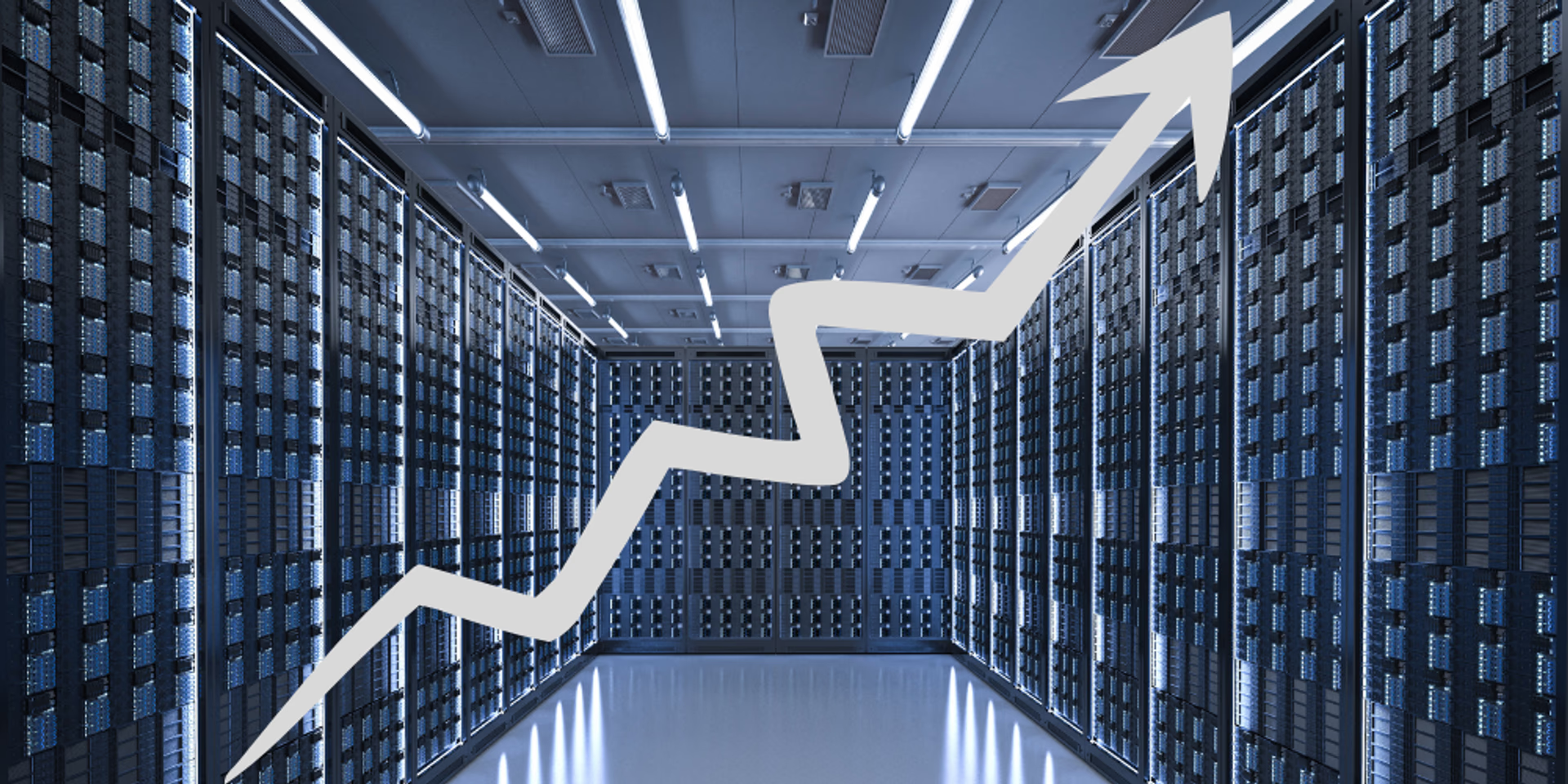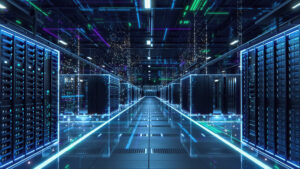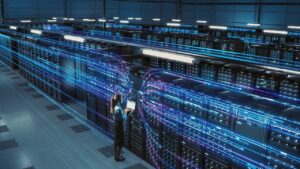AI Data Center Expansion: Powering the Future of Artificial Intelligence
Introduction
The rapid rise of artificial intelligence (AI) is transforming industries at an unprecedented pace. From generative AI models like ChatGPT and Google Gemini to enterprise automation tools, the computational demands of AI have reached levels never seen before. Behind this transformation lies a massive expansion of AI-powered data centers, the backbone infrastructure that fuels machine learning, natural language processing, and deep neural networks.
AI data center expansion is not just a story about more servers—it is about scaling cloud infrastructure, meeting colossal energy demands, developing sustainable cooling solutions, and ensuring high-performance networking to handle trillions of parameters. As AI adoption spreads across sectors such as healthcare, finance, manufacturing, and logistics, the need for hyperscale data centers is skyrocketing.
This article explores the drivers, challenges, opportunities, and future trends in AI data center expansion, analyzing how this growth is reshaping the digital and physical landscapes of our world.
1. The Drivers of AI Data Center Expansion
Several factors are fueling the surge in AI data center investments:
1.1 Explosion of Generative AI
The popularity of generative AI models like GPT, LLaMA, Claude, and Bard has dramatically increased compute demand. Training these large language models (LLMs) requires tens of thousands of high-performance GPUs running for weeks, consuming petabytes of data.
1.2 Enterprise AI Adoption
Enterprises are integrating AI into workflows, from customer service automation to predictive analytics. This adoption demands private AI cloud environments, boosting the need for dedicated infrastructure.
1.3 Rise of Edge Computing
AI is moving closer to the end-user. Autonomous vehicles, IoT devices, and AR/VR applications require low-latency data processing, which is driving micro data center deployment in regional hubs.
1.4 Cloud Provider Competition
Tech giants such as Microsoft Azure, Google Cloud, Amazon Web Services, and Oracle are racing to expand hyperscale AI data centers to attract enterprise clients. Partnerships with AI startups like OpenAI, Anthropic, and Cohere are intensifying this growth.
2. Anatomy of an AI Data Center
An AI data center is not just a traditional data facility with extra servers. It must be optimized for parallel processing, accelerated networking, and sustainable operations.
2.1 Compute Infrastructure
-
GPUs & TPUs: NVIDIA’s H100, AMD’s MI300, and Google’s TPUs dominate AI workloads.
-
Custom AI Chips: Companies like AWS (Trainium/Inferentia) and Microsoft (Athena) are developing proprietary AI silicon.
2.2 Networking
AI training requires ultra-high bandwidth interconnects like NVIDIA’s NVLink and Infiniband to ensure efficient model training at scale.
2.3 Cooling Systems
Traditional air cooling cannot handle GPU-intensive AI clusters. Liquid cooling and immersion cooling are becoming standard.
2.4 Storage Solutions
AI workloads demand high-performance storage, including NVMe SSD arrays and distributed file systems, to handle massive unstructured datasets.
3. Global Hotspots of AI Data Center Expansion
3.1 United States
The U.S. remains the leader, with hyperscale clusters in Virginia, Texas, Oregon, and Arizona. Major tech firms are investing billions in new AI campuses.
3.2 Europe
European expansion focuses on sustainability and compliance with GDPR. Nordic countries like Sweden and Finland attract AI centers due to cheap renewable energy and cool climates.
3.3 Asia-Pacific
China, India, and Singapore are emerging as AI infrastructure hubs. China’s government-backed AI push has accelerated hyperscale projects, while India is promoting AI-ready cloud zones to support startups and enterprises.
3.4 Middle East & Africa
Saudi Arabia and UAE are investing heavily in AI supercomputing infrastructure as part of their digital transformation and Vision 2030 initiatives.
4. The Sustainability Challenge
One of the biggest concerns about AI data center expansion is energy and environmental impact.
4.1 Energy Consumption
Training GPT-4 reportedly required thousands of MWh of electricity. With increasing model size, energy demand is scaling exponentially.
4.2 Carbon Footprint
Without green energy adoption, AI data centers could significantly increase global CO₂ emissions.
4.3 Water Usage for Cooling
Traditional cooling systems consume vast amounts of water. In drought-prone regions, this creates environmental conflicts.
4.4 Green Solutions
-
Transition to 100% renewable energy (wind, solar, hydro).
-
Use of liquid cooling and recycled water systems.
-
AI itself being used to optimize power and cooling efficiency.
5. Security and Governance in AI Data Centers
With great scale comes great responsibility. AI data centers must tackle cybersecurity, data privacy, and governance.
-
Data Sovereignty: Governments demand local storage of sensitive data (e.g., healthcare, finance).
-
Cyber Threats: Large-scale AI workloads make attractive targets for hackers.
-
AI Ethics and Governance: Managing bias, transparency, and responsible AI deployment requires infrastructure-level compliance systems.
6. Economic Impact of AI Data Center Expansion
6.1 Job Creation
Data center expansion generates jobs in construction, engineering, IT operations, and AI research.
6.2 Regional Development
Cities hosting hyperscale centers benefit from infrastructure upgrades, fiber networks, and renewable energy projects.
6.3 AI as an Economic Engine
McKinsey projects that AI could contribute $4.4 trillion annually to global GDP by 2030, with AI data centers being the enabler of this growth.
7. Challenges Facing AI Data Center Expansion
-
Chip Shortages: Limited supply of NVIDIA GPUs and AI accelerators is slowing deployment.
-
Regulatory Hurdles: Governments are tightening data and energy regulations.
-
High Costs: Building a hyperscale AI center can cost over $1 billion.
-
Geopolitical Risks: Trade restrictions, especially in semiconductor exports, affect expansion.
8. Future Trends in AI Data Centers
8.1 AI-Optimized Data Centers
Self-healing and self-optimizing facilities powered by AI-driven automation will reduce downtime and energy waste.
8.2 Quantum-Ready Infrastructure
As quantum computing develops, future data centers may integrate quantum accelerators for hybrid AI workloads.
8.3 Modular & Edge AI Data Centers
Instead of massive hyperscale sites alone, we will see modular edge data centers supporting real-time applications like autonomous driving.
8.4 Partnership Ecosystems
Tech giants, governments, and startups will form joint ventures to share infrastructure costs and accelerate innovation.
9. Case Studies: Leading AI Data Center Expansions
9.1 Microsoft Azure & OpenAI
Microsoft has invested billions in expanding AI data centers to support OpenAI’s models, including building one of the world’s largest AI supercomputers.
9.2 Google Cloud TPU Clusters
Google has built TPU v5-powered AI superclusters optimized for training massive generative models.
9.3 Amazon Web Services
AWS is scaling Trainium and Inferentia-based infrastructure, reducing reliance on third-party GPU suppliers.
9.4 NVIDIA Partnerships
NVIDIA is collaborating with global cloud providers to deploy DGX Cloud, enabling enterprise access to high-performance AI compute.
10. Balancing Growth with Responsibility
AI data center expansion is inevitable, but the key challenge is to balance innovation with sustainability, ethics, and inclusivity.
-
Governments must ensure regulations encourage green AI.
-
Companies must invest in transparent AI governance.
-
Researchers must explore energy-efficient algorithms to reduce compute needs.
Conclusion
AI data center expansion is the hidden infrastructure revolution behind the AI boom. Just as the industrial age relied on factories, the AI age relies on hyperscale and edge data centers. The next decade will witness trillions of dollars invested in building, optimizing, and greening these facilities.
However, with great computational power comes great responsibility. To ensure AI benefits humanity without devastating environmental costs, the world must adopt a sustainable and ethical approach to AI data center expansion.
As we look forward, the expansion of AI data centers will not only define the future of technology but also the future of our planet’s sustainability and economy.
For quick updates, follow our whatsapp channel – https://whatsapp.com/channel/0029VbAabEC11ulGy0ZwRi3j
https://bitsofall.com/microsofts-proprietary-models-building-the-future-of-ai/
https://bitsofall.com/https-yourblog-com-baidus-ernie-x1-1-reasoning-first-model/
Oracle and OpenAI: Inside a Partnership That’s Reshaping AI Infrastructure
Intensified Competition Among Major Tech Companies: What It Means for the Future of Tech






